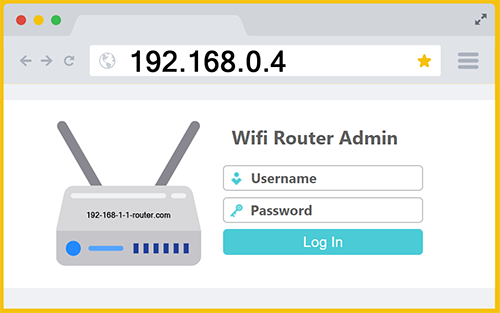192.168.0.4
 Guide to 192.168.0.4 Admin Login
Guide to 192.168.0.4 Admin Login
Devices connected to your home network, including routers and other smart WiFi-enabled appliances, typically rely on private IP addresses such as 192.168.0.4 for setup and management. To reach the configuration panel of one of these devices, first ensure that your computer or phone is on the same wireless network. Next, launch a web browser like Chrome and type “192.168.0.4” directly into the address bar located at the very top of your screen.
If the device is active and the IP address is correct, you will be taken to its login screen. Enter the appropriate administrator credentials to proceed. Once inside the dashboard, you will have full control over the settings, allowing you to customize configurations, update features, and fine-tune the device to suit your needs.
192.168.0.4 Device Login

First, make sure your smartphone is connected to the same WiFi network as the device you want to configure. Once connected, open your preferred browser and type 192.168.0.4 into the address bar at the top of the screen. If the IP address is correct and the device is turned on, the login page will appear, prompting you to enter your username and password.
Want a quicker way to connect? Just tap the button below to go directly to the login page without having to type anything.
Typical user ID: admin
Typical passwords: admin or password
If you want to open your device settings, do not type 192.168.0.4 into Google or ask ChatGPT. They are both made to provide information and cannot connect with devices on your local network. Instead of taking you to the login screen, they will just show search results or explanations.
To reach the correct settings menu, enter the IP address directly into the browser address bar at the top of the screen. This is the only way to create a direct connection with the device and access the controls needed to adjust its configuration.
Beginner Guide to 192.168.0.4
The IP address 192.168.0.4 is part of a special group of addresses reserved exclusively for private use within local networks. It is commonly assigned by routers or network controllers to various devices such as smart home hubs, printers, security cameras, or other Wi-Fi connected appliances. Because this address is private, it cannot be reached from outside your home or business network, which significantly enhances security by preventing unauthorized remote access.
One reason that 192.168.0.4 is frequently utilized is due to how easy it is to manage within a typical home or small business network environment. Network administrators or home users can conveniently log into the device using this straightforward numerical address. Simply entering 192.168.0.4 directly into the browser address bar provides access to administrative tools and settings, enabling users to customize their device setup, update firmware, or troubleshoot connection issues quickly.
Another advantage of using 192.168.0.4 is that this address falls into the same subnet commonly employed by most routers, meaning that no complicated configurations are needed for a smooth setup process. Devices using addresses like this generally follow a standard setup procedure, making them extremely user friendly even for those with limited technical experience. For example: private address 192.168.0.1 is one of the most used router IPs on earth for admin access. This simplicity has led manufacturers to widely adopt it as a default address in their setup instructions and documentation.
Moreover, using a private IP address such as 192.168.0.4 helps prevent conflicts or overlapping issues that could occur if public addresses were used within private networks. Since these private addresses are only valid internally, multiple households or businesses can simultaneously use the same IP address without causing any confusion or technical disruptions. This allows for a highly efficient allocation of online resources, simplifying overall network management.
Finally, because devices using 192.168.0.4 operate entirely within the boundaries of your network, you retain full control over access and security settings. You can customize who can connect, which devices have priority, and how traffic is routed within your network. This freedom to manage your network precisely according to your preferences makes private IP addresses like 192.168.0.4 not only practical, but essential for maintaining a secure, responsive, and highly efficient local network environment.